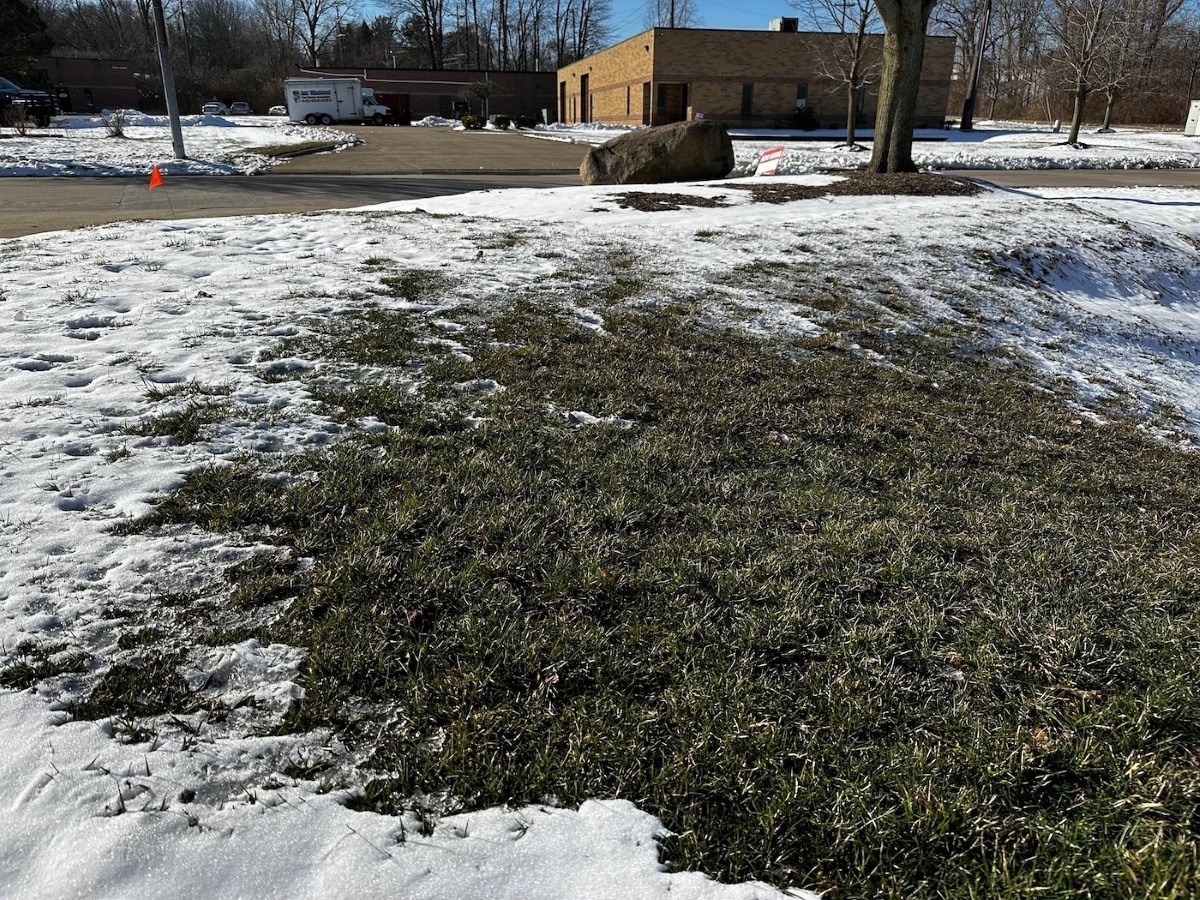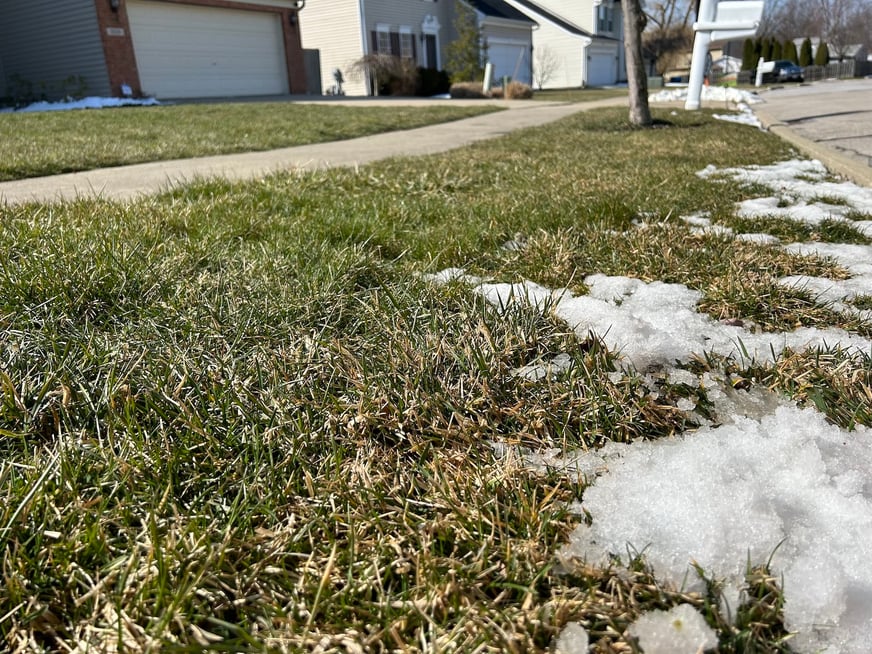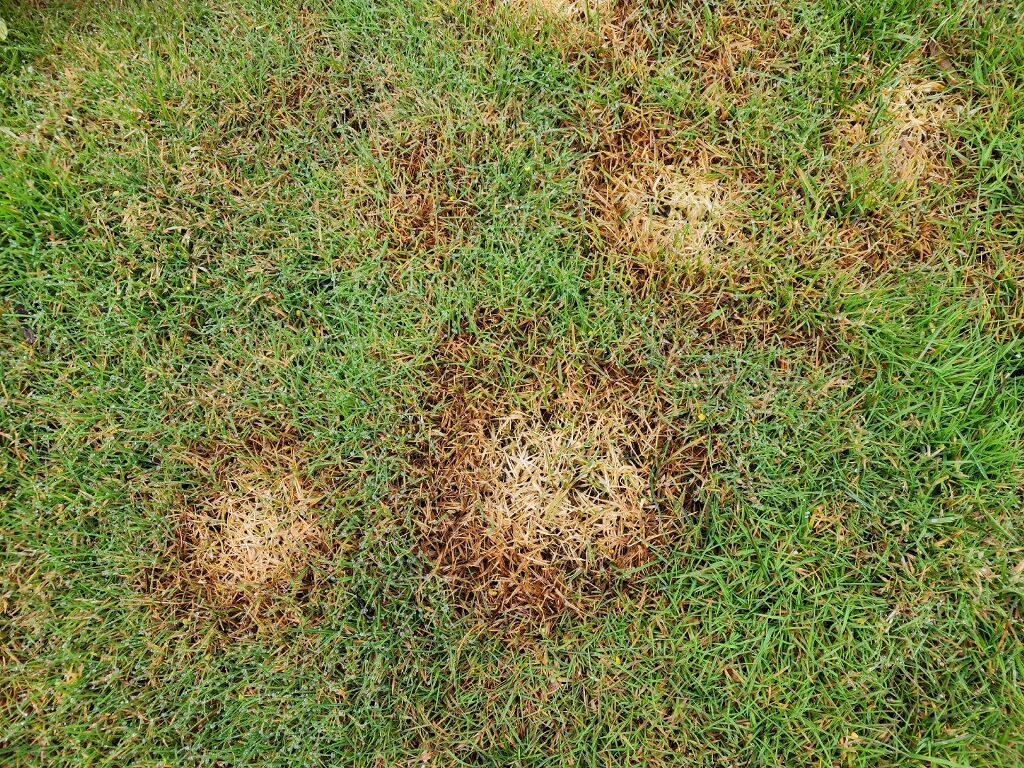
How to Prevent Your Lawn From Winter Damage in Northeast OH
After a rough Northeast Ohio winter, there’s nothing better than the signs that spring is on its way.
The cold weather slowly warms to the point where you need fewer layers and feel less like an eskimo when you venture outdoors. The snow melts away and you can start to see your grass and your flower beds again. And you might even start to notice buds on your early blooming trees and shrubs. Color is coming, and it’s something you crave after the gray months of hunkering down indoors during the worst of winter.
But it can be incredibly frustrating when you notice that your grass isn’t keeping up with the rest of this early spring joy. It might look lackluster or patchy or – gasp! – dead.
Take a deep breath. It’s going to be OK. Let’s talk about winter’s impact on your lawn, winter grass damage and how to prevent winter lawn damage.
Get To Know Your Lawn in Winter
Winter conditions can do a number on your lawn, especially if it isn’t well cared for and, as a result, is more stressed out or vulnerable.
Let’s talk about some of the things that can impact your lawn in winter.
Learning About Winter Grass Damage
While cool-season lawns in Northeast Ohio can generally handle winter conditions, extreme temperature drops, excessive ice, and snow piles can lead to winter grass damage.
You might notice this appear in patches of grass that stay brown or seem bare while the rest of your lawn seems to bounce back to its healthy green self in spring.
/TurfPrideSpring2022(WebOptimized)-64.jpg?width=5168&height=2912&name=TurfPrideSpring2022(WebOptimized)-64.jpg)
A Lawn in Winter Issue: Cold Desiccation
You might think many turf problems come from snow, but snow is actually like an insulator for your lawn in winter.
But uncovered grasses can experience an impact from extremely frigid temperatures as they leach essentials like moisture and air. Since the soil is frozen, lawn roots can’t replace that lost moisture, which can cause some issues in your grass blades.

Snow Mold On Your Lawn in Winter
Snow mold is a type of fungus that damages or kills grass after snow melts.
You could see this issue impact your lawn in winter during February and March, particularly after months of very cold temperatures and snowfall. It shows up as circular patches of matted grass that can look white or pink.

How to Prevent Winter Lawn Damage
Now that we talked about some of the problems that can impact your lawn in winter, let’s talk about how to prevent them.
With winter grass damage, a lot will depend on how thick the ice is and how long it remains. New grass is more susceptible since they are young and haven’t developed strong roots yet. Developing strong, healthy grass can help ensure it can handle some ice accumulation.
Desiccation leads to dehydration and that can actually lead to winter grass damage. The best way to prevent this is by making sure you hydrate your lawn well through fall so it has enough moisture through winter.
For snow mold, if left untreated, this fungus can lay dormant in the grass during summer and then re-emerge when temperatures drop again. So, if left to spread, the more areas of your lawn may die and need to be replaced.
To prevent many of these issues, start by taking care of your grass in late summer and fall. This amounts to applying organic, slow-release fertilizer in the right amounts at the right times and mowing to the proper 3- to 4-inch height during the growing season and then mowing to no less than 2 inches on the last cut before winter.
/lawn%20mowing%20height.jpg?width=5168&height=2912&name=lawn%20mowing%20height.jpg)
This also means mulching or raking up and removing fall leaves. Leaving patches of wet leaves on your lawn is a fast track to issues like snow mold.
After heavy snow, it can take a longer time for it to melt, especially in shady areas. As winter comes to an end, this can add to further development of diseases like snow mold. At winter’s end, break up those snow piles to help it melt faster. A very light raking of your grass in spring can also help encourage airflow and lawn recovery.
Let Turf Pride Help You Prevent Winter Lawn Damage
Sure, after winter you may notice your grass has a hard time waking back up and you might see some discolored or bare areas.
But you can do things throughout the year to strengthen your lawn and enable it to deal with issues that can impact your lawn in winter.
Have some questions about things you’re seeing in your lawn post a rough winter? Give Turf Pride a call. We can create a program for your lawn so that your soil gets the nutrients it needs to create thick, green grass with fewer weeds and fewer lawn disease problems. Then all you have to do is settle in for winter and enjoy the season knowing your lawn is ready for spring.
/office%20staff%20on%20phone%20with%20customer.jpg?width=5168&height=2912&name=office%20staff%20on%20phone%20with%20customer.jpg)
Ready to learn why Turf Pride could be your choice for lawn care services in Northeast Ohio? Get started today with a free quote. Together, we can prepare a customized plan that is perfect for you and your lawn.


